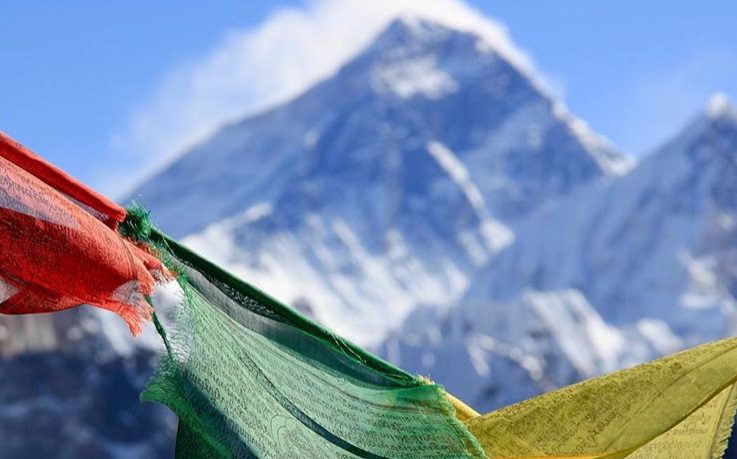Mount Everest is Taller Than Believed, by Two Feet
China and Nepal have finally agreed on the height of the world's tallest peak

China and Nepal have finally agreed on how tall Mount Everest is after years of dispute. They presented a new official figure of 8,848.86 metres (29,031 feet) above sea level. The new height is 0.86 metres (two feet) above the higher of the countries’ two previous figures.
Everest (Sagarmatha in Nepal and Qomolangma in Tibet) sits at Nepal’s border with Tibet in the Himalayas. Over the years, Nepal and Tibet, plus other governments around the world, have suggested differing estimates of the hieght of the world’s tallest mountain.
Susheel Dangol, Deputy Director General at Nepal’s Department of Survey, said that the project was a matter of national pride for Nepal and a prestigious undertaking for the government. “I feel very proud that we were able to complete it successfully. Nepal and China jointly processed the surveyed data and came up with the result.”
In 2005, a Chinese survey of the mountain estimated that it stood at around 8,844 meters, but Nepal didn’t recognize it as the official height. Nepal was still using the findings of a 1955 Indian survey, which found it to be 8,848 metres.
After a 7.8-magnitude earthquake hit Nepal in 2015, experts suggested the hieght of Everest might have changed. Two years later, the Nepali government began an project to determine the “new” height.
Measuring the height of big mountains is difficult because ocean levels vary depending on tides, magnetism and other factors. Rising sea levels are creating another factor.
Measuring from the foot of the mountain to the summit, Hawaii’s Mauna Kea is the tallest, but most is under the sea. As measured from the Earth’s core, Ecuador’s Mount Chimborazo is the world’s highest, standing more than 2,072 metres higher than Everest. Because the Earth bulges in the middle, mountains along the equator are farther from the core.
First Ascent: In 1953, a ninth British expedition, led by John Hunt, returned to Nepal. Hunt selected two climbing pairs to attempt to reach the summit. The first pair, Tom Bourdillon and Charles Evans, came within 100 metres of the summit on May 26, 1953, but turned back after running into oxygen problems. Two days later, the expedition made its second attempt on the summit with the second climbing pair: the New Zealander Edmund Hillary and Tenzing Norgay, a Nepali Sherpa climber. They reached the summit at 11:30 local time on May 29, 1953 via the South Col route.
Press Release: James Morris, the correspondent on the spot of The Times newspaper, heard the news at basecamp on May 30 and sent a coded message by runner to Namche Bazaar, where a wireless transmitter was used to forward it as a telegram to the British Embassy in Kathmandu.
Morris’ encoded message to his paper read: “Snow conditions bad stop advanced base abandoned yesterday stop awaiting improvement”. “Snow conditions bad” was the agreed code to signify that the summit had been reached; “advance base abandoned” referred to Hillary and “awaiting improvement” referred to Tenzing.
The message was received and understood in London in time for the news to be released, by coincidence, on the morning of Queen Elizabeth II’s coronation on June 2. Everest’s first ascent was probably the last major news item to be delivered to the world by runner.



